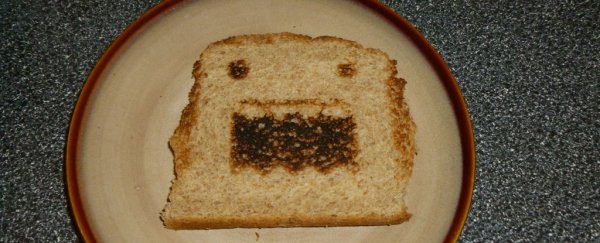Crispy potatoes and crunchy toast may be one of the most enjoyable ways to get your fill of carbohydrates, but according to a new report by the UK's food safety body, a preference for having your starchy foods 'well done' could be posing some serious health risks.
While it's long been known that over-cooking can make some foods carcinogenic, the new study from the Food Standards Agency (FSA) goes into new levels of detail on the dangers posed by acrylamide – a dangerous chemical substance that forms when starchy foods are cooked – and looks at how consumers can avoid creating it in the kitchen.
Acrylamide, which can lead to cancer and damage to the nervous and reproductive systems, isn't a chemical that's added to food during manufacturing or farming processes – rather, it's a totally natural by-product of cooking, formed during a chemical reaction between amino acids and sugars. This reaction, called the Maillard reaction, often occurs when foods with high starch content are cooked at high temperatures, including frying, roasting, and baking.
Essentially, the hotter you cook your food and the longer you cook it for will determine the amount of acrylamide you produce, which is why burnt and blackened foods are particularly high in the toxic substance. The kinds of foods in which acrylamide is generally found include potatoes, bread and toast, cakes and biscuits, and coffee.
While we can't avoid exposure to acrylamide entirely, the way we cook and consume food can make a huge difference to the amount that we ultimately consume, the FSA found in its latest research.
For example, in cooked oven chips, the sample with the highest level of acrylamide levels, showing a deep golden brown colour and some chips lightly burnt, contained 1,062 micrograms per kilogram (μg/kg), whereas the palest chips contained almost 50 times less, just 26 μg/kg.
In roast potatoes, crispy and browned potatoes contained 490 μg/kg, while the lightest, barely roasted vegetables contained 6 μg/kg. Toast samples ranged from 6 μg/kg (very pale white bread) to 168 μg/kg (very toasted brown bread).
The researchers point out that a huge range of factors can influence the amount of acrylamide in food in addition to cooking, including storage, freshness, and surface ratio, which means their testing did not produce a neat correlation between the major contributors to acrylamide formation – cooking temperature and cooking time – and the acrylamide data they saw in the lab.
"Nevertheless, chips and toast with the highest levels of acrylamide did look noticeably darker (more brown) than the corresponding samples with the lowest levels," the researchers say. "Given that participants often only classed food as being 'done' after visual inspection for colour, this suggests that consumer preference does play a role in potential acrylamide exposure."
The FSA isn't saying you should stop eating particular foods, but they do offer these three key tips to keep your acrylamide consumption down: block quote: • When making chips at home, they are cooked to a light golden colour. • Bread should be toasted to the lightest colour acceptable. • Manufacturers' instructions for frying or oven-heating foods, (such as chips), should be followed carefully.
Remember: cooking doesn't mean 'make golden brown', in fact, you should probably avoid that tasty-sounding description. You can find a detailed list of the findings in the study here.
